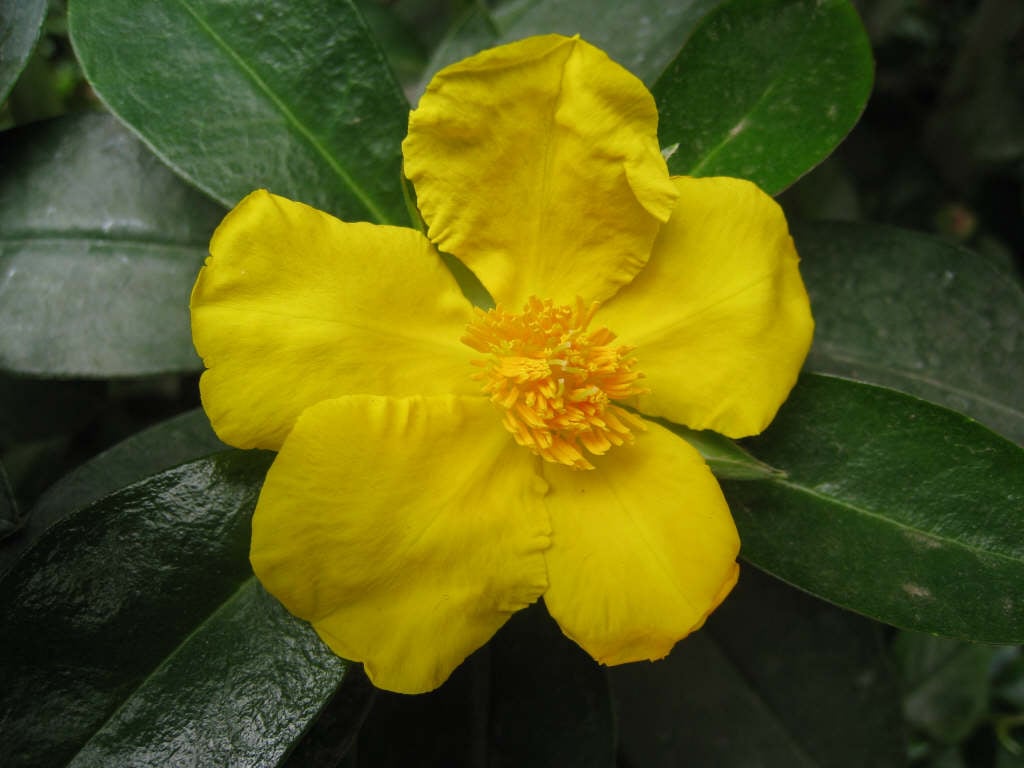Hibbertia scandens
snake vine
A twining or sprawling evergreen shrub with stems to 3m or more, bearing glossy ovate leaves and solitary rich yellow, 5-petalled flowers to 6cm across in summer

Buy this plant
Size
Ultimate height
2.5–4 metresTime to ultimate height
10–20 yearsUltimate spread
1.5–2.5 metresGrowing conditions
Moisture
Moist but well–drained, Well–drainedpH
Acid, Alkaline, NeutralColour & scent
| Stem | Flower | Foliage | Fruit | |
| Spring | Green | |||
|---|---|---|---|---|
| Summer | Yellow | Green | ||
| Autumn | Green | |||
| Winter | Green |
Position
- Full sun
- Partial shade
Aspect
South–facing or East–facing or West–facing
Exposure
Sheltered Hardiness
H1CBotanical details
- Family
- Dilleniaceae
- Native to GB / Ireland
- No
- Foliage
- Evergreen
- Habit
- Climbing
- Genus
Hibbertia can be evergreen shrubs, trees or climbers, with simple leaves and saucer-shaped, 5-petalled, yellow, pink or white flowers that may be solitary or borne in axillary or terminal cymes
- Name status
Correct
- Plant range
- Australia
How to grow
Cultivation
Grow under glass in a peat-free, loam-based potting compost in bright filtered light with humidity. Water freely in the growing season and apply a balanced liquid fertiliser monthly. In winter, keep moist
Propagation
Propagate by seed, sown at a temperature of 19-24°C (66-75°F) in spring. Take semi-ripe cuttings in late summer
Suggested planting locations and garden types
- City and courtyard gardens
- Coastal
- Cottage and informal garden
- Flower borders and beds
- Wall side borders
Pruning
Pests
scale insects are a common problem
Diseases
Generally disease-free
Get involved
The Royal Horticultural Society is the UK’s leading gardening charity. We aim to enrich everyone’s life through plants, and make the UK a greener and more beautiful place.